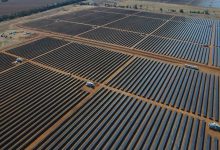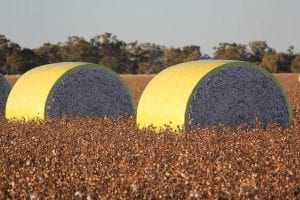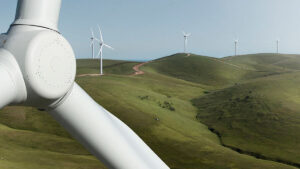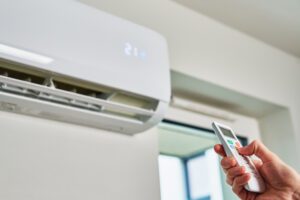AGL Energy has set a goal of installing 1,200MW of new battery storage and demand response capacity by 2024, and is tying the bonuses for executives and senior management to hit growth targets for the company’s clean energy and storage portfolio.
The new targets were revealed by AGL Energy during the company’s earnings call for the 2019-20 financial year, with the company highlighting its efforts to diversify its energy portfolio into clean energy technologies, as the company reported a lower profit as earnings from its coal generators took a hit.
“Although energy prices are lower, we still see an opportunity to invest as the composition of the portfolio shifts away from coal towards the new firmed renewable energy generation the market will need,” AGL chief operating officer Markus Brokhof said.
“AGL’s strategy is to optimise dispatchable generation, support investment in firmed renewables and continue to invest in the accelerating emergence of batteries and other energy storage technologies.”
Despite the disruptions being caused by Covid-19, AGL said that it was looking to expand its portfolio of clean energy projects, especially storage capacity, and is targeting up to 850MW of grid scale battery storage, as well as 350MW of distributed storage and demand response capacity by 2024.

This represents a massive expansion of AGL’s storage capacity, which currently includes just 30MW of large-scale storage (the Dalrymple battery in South Australia) and 72MW of distributed energy resources (mostly with the South Australia battery initiative), with AGL set to seek proposals from the market for the delivery of the large-scale storage projects.
“In fact, we are currently inviting tenders to procure integrated battery systems, which could satisfy the entire grid scale storage target. We believe battery technology is now at a level that allows AGL to lead Australia’s transition to a smarter and more efficient energy future,” Brokhof added.
AGL is currently progressing plans to add battery storage capacity to a number of its existing operations, including a 100MW/150MWh battery set to accompany the massive Wandoan solar farm in Queensland, as well as a series of large-scale battery storage totalling 200MW/400MWh, including one battery to be built alongside the delayed Sunraysia solar farm in partnership with Maoneng.
AGL’s documents suggested that it was still considering plans for a big 50MW battery in Broken Hill, where AGL already operates a 53MW solar farm and the 200MW Silverton wind farm, but it is likely get squeezed out by a Transgrid preference for the world’s biggest compressed-air storage facility to create one of the world’s biggest renewable energy micro-grids.
A battery for the site of the Liddell coal generator, scheduled for closure by 2023 despite the jaw-boning efforts of the federal government, is also included.
In its earnings update, AGL also confirmed that it was aiming for 34 per cent of its electricity generation portfolio to be sourced from renewable energy and energy storage technologies by 2024, an increase from its current levels of 22 per cent.
However, as detailed in the company’s earnings presentation, the increase in AGL’s share of renewable energy generation is likely to be driven primarily by the closure of the Liddell coal-fired power station, expected in 2023, rather than a substantial increase in already committed renewables generation, although it hasn’t ruled out further contracts with renewable projects.

Significantly, the targets will form part of AGL’s senior management incentive plan, which tie bonuses and pay increases to the successful growth of AGL’s clean energy portfolio.
“Consistent with our climate statement, our aspiration is for 34 per cent of AGL’s electricity capacity to come from renewables and clean storage, compared with 22 per cent today,” AGL CEO Brett Redman said.
“And our goal is 20 per cent of group revenue from clean energy or carbon neutral products, compared with 11 per cent today. In both cases the target reflects a max vesting outcome for our new long term incentive metrics.”
AGL reported a fall in underlying profit for the 2019-20 year, which fell 22 per cent to $816 million, citing outages at the Loy Yang power station and falling wholesale electricity prices for lower revenues. Their guidance for 2021 has slumped to $500 million, triggering a sharp fall in their share price on Thursday.
A relaxation of overall electricity supply constraints, and a slight fall in electricity demand due to the impacts of Covid-19 has seen wholesale electricity prices fall to some of their lowest levels in several years, and has had flow on impacts for earnings for generators.
Adding to the reduced profit, AGL suffered an outage in a unit at the Loy Yang power station in May last year, which remained offline for almost all of the remainder of 2019, and was responsible for a $100 million reduction in AGL earnings.










